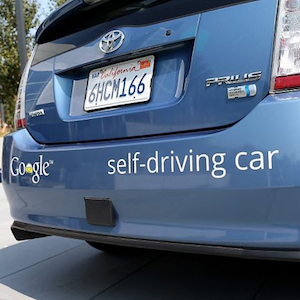In 10 to 15 years, research suggests that driverless cars will be the norm in most of the world’s developed countries, emerging nations following within a short period of time. This is made possible by advancements of the modern computer, better global positioning system and sensor technology.
A trend in driverless driving has emerged. States such as Florida, California, and Nevada have passed legislation that allows the testing of these automated vehicles in public roads. Google, primarily an Internet company, funded a project that aims to create a Google-powered automated car. The video below explains the company’s vision towards the project.
The world is home to 7 billion people. A significant number of these are residing in societies and metropolitan cities where cars and ground vehicles are the major modes of transportation. We have an abundance of drivers. But why are driverless cars a topic that sparks the interest of car manufacturers and Google alike? Vulcan Post listed down some advantages to driverless car technology:
Faster Reaction Time
Since the computer is technically powering and driving the car, there is a faster reaction time when it comes to changes in road and driving conditions. For example, a slight slow down of the car in front of your vehicle might not be noticeable by a human driver, but it will be noticed by the computer. This will prompt it to slow down its speed accordingly.
Higher Speed Limits and Reduced Safety Gaps
Because there is no human driver, safety gaps between vehicles can be reduced. Traffic flow can also be managed more effectively, thereby allowing higher speed limits in highways. Higher speed limit will mean faster travel and transportation of goods, services, and even passengers alike. If you want to take a look at the macro level, faster transportation of products, particularly of the nation’s primary goods, will mean less oil usage. And less oil usage will mean less markup of products being sold in the market. Less markup will mean common buyers can buy goods at a price where the seller can still get a significant profit. The market-driven economy wins in a driverless car world.
The Luxury of Traveling to Those Who Cannot
The elder and disabled people can go where they want to, without having a human driver with them. This can be of a significant importance to countries with an aging population, such as Japan.
If you are an employee who has a car to drive to and from your office, the driving time can instead be used to work, or to do other more productive stuff inside your car.
Google’s Driverless Car
The last paragraph is of significant importance, particularly to Google who has its own driverless car project. As Google car itself is powered and navigated through Google Maps and other of the company’s products, a person can spend more time with the Internet. The time that would otherwise be spent on driving can now be used to check Gmail, to comment on YouTube, to Tweet, to share a story, to click an advertisement, and anything else to stay connected.
Ultimately, the vision of automated driving is to reduce the risk of accidents. With the precision of technology and computer, human error will be etched out, making the road a safer place for everyone.
This can also lead to a drastic reduction in traffic, which is a problem in metropolitan cities such as Manila in the Philippines as well as Jakarta in Indonesia, where traffic is so heavily congested you have to wake up early to arrive at the office on time.

While there are many advantages associated with automated vehicles, there are also several disadvantages, including the liability issue in the case of an accident, as well as a potential compromise on the car’s computer software.
Roadmap to Driverless Automobiles
Early Fascination
Development of driverless cars have existed since the 1920’s when “linrrican Wonder” roamed the streets of New York, while being controlled by an antenna wirelessly connected onto a second car. In the 1960’s a project by the Ohio State University also paved way to automated vehicles that can be activated through electronic devices in the roadway.
Fascination with these driverless cars have existed even after cars were first invented. In the mid-1950s, advertisements such as the one above appeared on newspapers which depicts that era’s concept of automated cars.
The 21st Century Efforts
While efforts to create fully automated cars up to the late 1990s have seen moderate success, it was only in the 21st century when significant improvements to this technology emerged. The US government, in particular, tested driverless ground vehicles to navigate difficult terrains, testing if they can avoid obstacles such as boulders and trees. The first public use of a driverless transport system arguably appeared in the Netherlands, where the Park Shuttle was operated in the early 2000s.
The Future is Uncertain But Towards Driverless Cars
Predictions for driverless cars in the future still remain uncertain, but various car manufacturers have already set up their product roadmap to include this technology. Nissan, a Japanese company, expects to sell automated vehicles by 2015. Google on the other hand expects to release the Google Driverless car to the public by 2018. Last year, Google Co-Founder Sergey Brin shared:
“You can count on one hand the number of years it will take before ordinary people can experience this,” This, referring to their automated car project.
If this succeeds, widespread adoption of the technology will soon follow.
Are you looking forward to owning a driverless car in the future?











